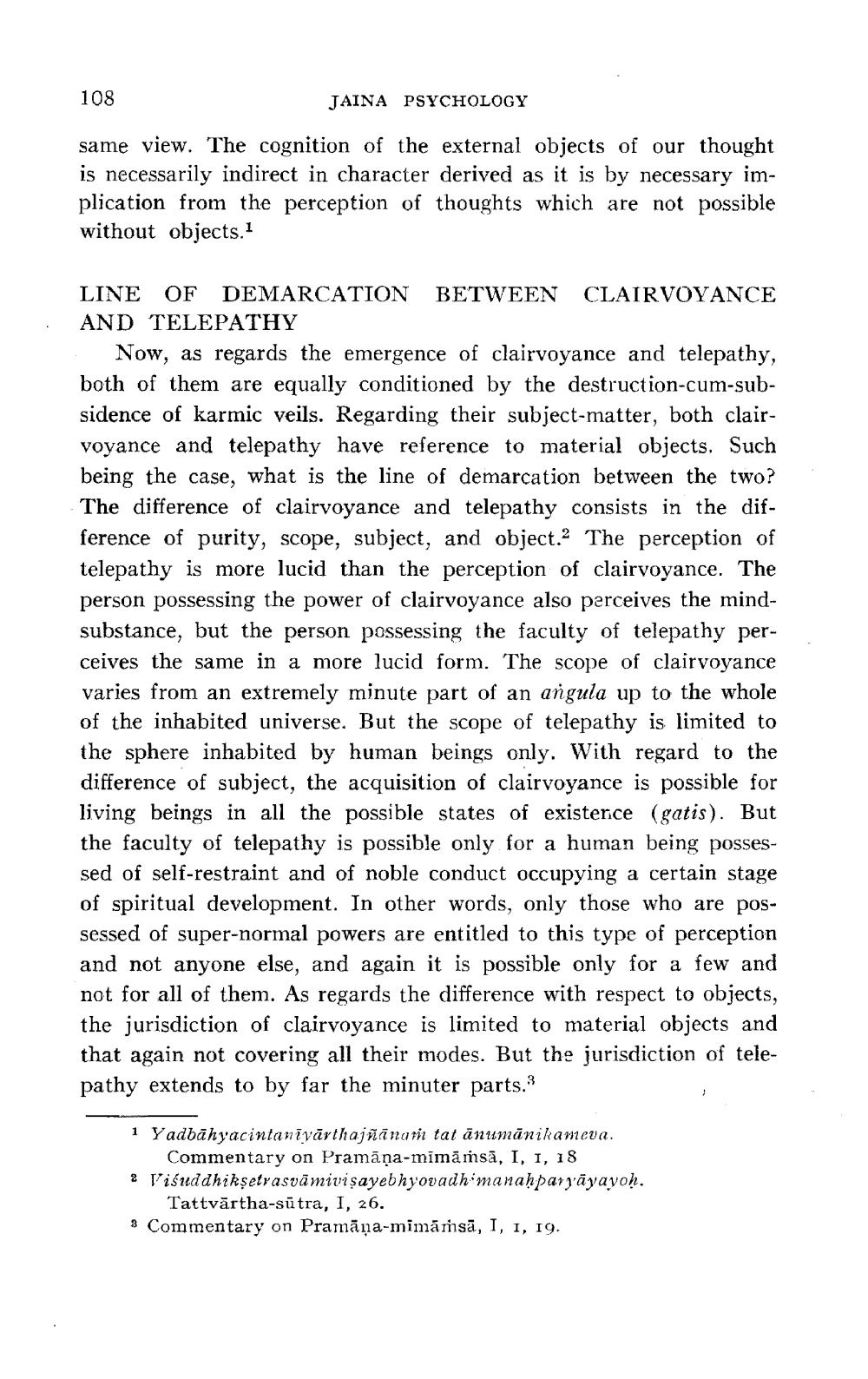________________
108
JAINA PSYCHOLOGY
same view. The cognition of the external objects of our thought is necessarily indirect in character derived as it is by necessary implication from the perception of thoughts which are not possible without objects.
LINE OF DEMARCATION BETWEEN CLAIRVOYANCE AND TELEPATHY
Now, as regards the emergence of clairvoyance and telepathy, both of them are equally conditioned by the destruction-cum-subsidence of karmic veils. Regarding their subject-matter, both clairvoyance and telepathy have reference to material objects. Such being the case, what is the line of demarcation between the two? The difference of clairvoyance and telepathy consists in the difference of purity, scope, subject, and object. The perception of telepathy is more lucid than the perception of clairvoyance. The person possessing the power of clairvoyance also perceives the mindsubstance, but the person possessing the faculty of telepathy perceives the same in a more lucid form. The scope of clairvoyance varies from an extremely minute part of an angula up to the whole of the inhabited universe. But the scope of telepathy is limited to the sphere inhabited by human beings only. With regard to the difference of subject, the acquisition of clairvoyance is possible for living beings in all the possible states of existence (gatis). But the faculty of telepathy is possible only for a human being possessed of self-restraint and of noble conduct occupying a certain stage of spiritual development. In other words, only those who are possessed of super-normal powers are entitled to this type of perception and not anyone else, and again it is possible only for a few and not for all of them. As regards the difference with respect to objects, the jurisdiction of clairvoyance is limited to material objects and that again not covering all their modes. But the jurisdiction of telepathy extends to by far the minuter parts.?
1 Yadbāhyacintanīvārthajñānari tat anumānikameva.
Commentary on Pramāņa-mimāṁsā, I, I, 18 * Vi<ddhikoetrasoãmiui sayebh yowadh manahpah yayayoh.
Tattvārtha-sūtra, I, 26. 3 Commentary on Pramāņa-mimāṁsā, I, I, 19.




